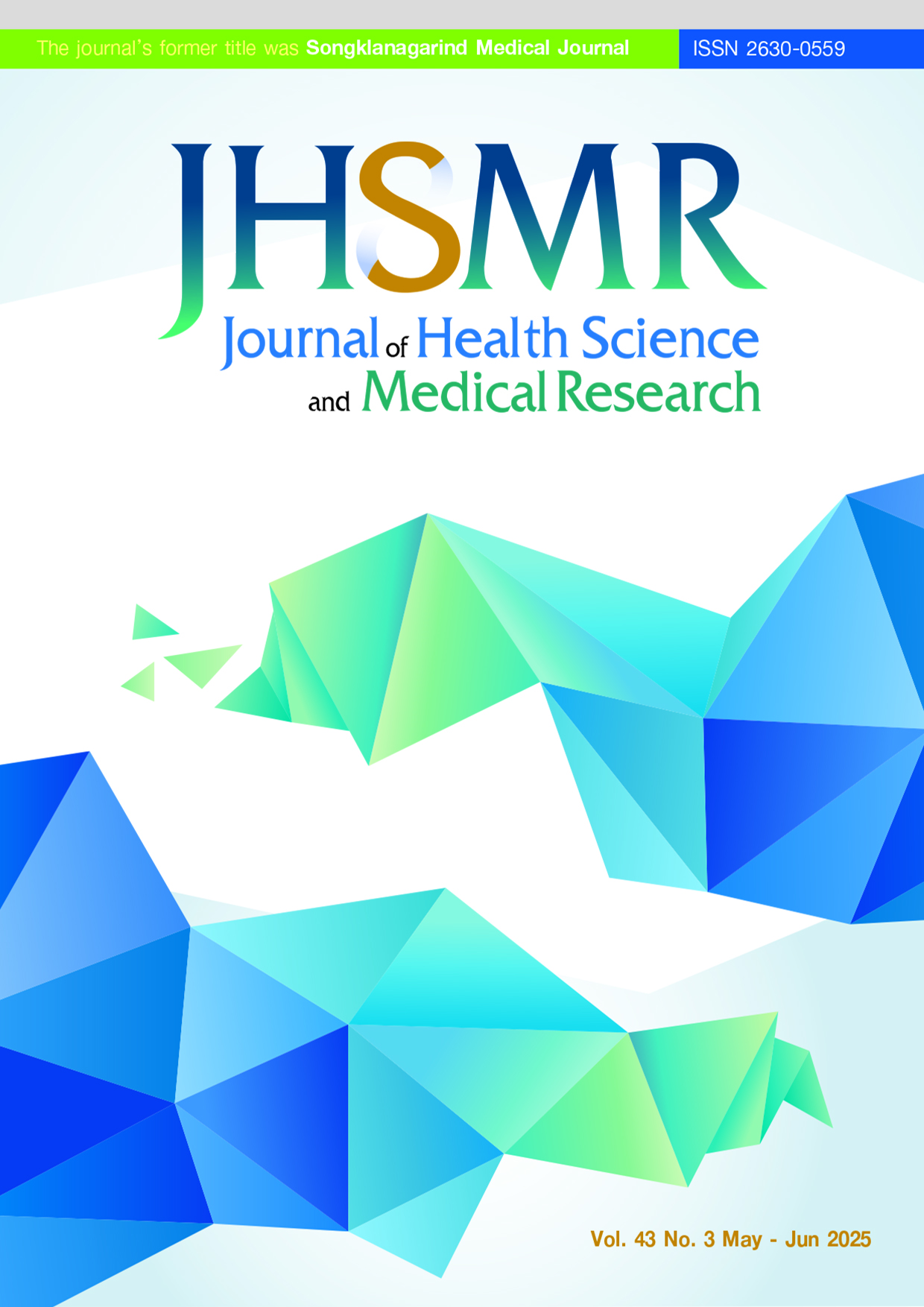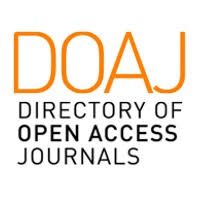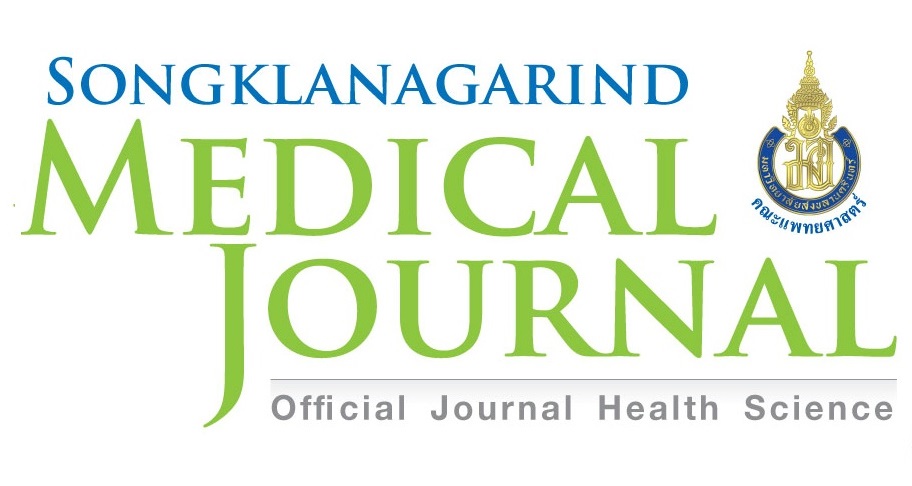An Accuracy Study of Contact and Non-Contact Clinical Thermometers at Songklanagarind Hospital, Thailand
DOI:
https://doi.org/10.31584/jhsmr.20241136Keywords:
clinical thermometer accuracy, contact and non-contact clinical thermometers, Songklanagarind Hospital, temperature calibrationAbstract
Objective: This study aimed to assess and validate the accuracy of contact clinical thermometers (CCTs), clinical digital thermometers (CDTs), temperature probes, and non-contact clinical infrared thermometers (NCCITs), which are commonly used at Songklanagarind Hospital.
Material and Methods: The Medical Equipment and Maintenance Centre (MEMC) at Songklanagarind Hospital collected a total of 187 clinical thermometers, from various departments. This collection comprised of 45 temperature probes, 112 CDTs, and 30 infrared thermometers. All these thermometers underwent calibration at three distinct temperature points, via comparison with the secondary reference temperature standard (Pt100, SIKA). To assess the accuracy of the collected thermometers, an evaluation of the associated error and uncertainty was conducted. The maximum permissible errors (MPEs) were precisely defined as: ±0.2 °C and ±0.3 °C for CCT and ±0.5 °C for NCCIT.
Results: The results revealed that all temperature probes, which represent 100% of the sample, demonstrated an average acceptable accuracy; determined by the average of the percentage of acceptable accuracy across three temperature calibration points, within the Maximum Permissible Error (MPE) range of ±0.2 °C. However, only 14% of the CDTs showed an average acceptable accuracy within the MPE of ±0.2 °C. Meanwhile, 51% of the CDTs met the MPE of ±0.3 °C. Additionally, 90% of the NCCIT demonstrated superior acceptable accuracy compared to the MPE of ±0.5 °C.
Conclusion: This research emphasizes the significance of assessing the reliability and accuracy of clinical thermometers through calibration techniques; especially during the ongoing COVID-19 pandemic, which demands large-scale illness screening.
References
Sund-Levander M, Forsberg C, Wahren LK. Normal oral, rectal, tympanic and axillary body temperature in adult men and women: a systematic literature review. Scand J Caring Sci 2002;16:122–8.
Mekdade A. The Top Three Challenges Facing Hospitals Today: Infection Control, Sustainability & Costs. [homepage on the Internet]. Belfast: TriMedika; 2022 [cited 2022 Dec 28]. Available from: https://trimedika.com/trimedika-ltd-looks-at-the-top-three-challenges-facing-hospitals-today-infection-control-sustainability-costs/
Woodrow P, Higgs D, Lewis T, Whitney S, Buras-Rees S, O’Donnell A, et al. Comparing no-touch and tympanic thermometer temperature recordings. Br J Nurs 2006 1;15:1012–6.
Rudtsch S, von Rohden C. Calibration and self-validation of thermistors for high-precision temperature measurements. Measurement 2015;76:1–6.
Dornish M, Kaplan D, Skaugrud Ø. Standards and guidelines for biopolymers in tissue-engineered medical products: ASTM alginate and chitosan standard guides. Ann N Y Acad Sci 2001;944:388–97.
ASTM International. ASTM E1112-00: Standard specification for electronic thermometers for intermittent determination of patient temperature. ASTM Committee F04 on Medical and Surgical Materials and Devices. West Conshohocken, PA: ASTM International; 2011;p.19428.
ISO. ISO 80601-2-56: Medical electrical equipment—Part 2-56: Particular requirements for basic safety and essential performance of clinical thermometers for body temperature measurement. Geneva: International Organization for Standardization; 2017.
IEC 80601-2-59:2017. Medical electrical equipment—Part 2-59: Particular requirements for the basic safety and essential performance of screening thermographs for human febrile temperature screening. Geneva: International Organization for Standardization; 2017.
Ghassemi P, Pfefer TJ, Casamento JP, Simpson R, Wang Q. Best practices for standardized performance testing of infrared thermographs intended for fever screening. PloS One 2018;13:e0203302.
Bich W, Cox MG, Harris PM. Evolution of the ‘guide to the expression of uncertainty in measurement.’ Metrologia 2006;43:S161.
Pecoraro V, Petri D, Costantino G, Squizzato A, Moja L, Virgili G, et al. The diagnostic accuracy of digital, infrared and mercury-in-glass thermometers in measuring body temperature: a systematic review and network meta-analysis. Intern Emerg Med 2021;16:1071–83.
Smith J, Alcock G, Monk B, Jones R. Concordance of temperature measurements on preterm and term infants using oesophageal (core), axilla & skin methods in a neonatal intensive care unit. J Neonatal Nurs 2022;28:445–51.
ASTM. ASTM E1965-98: Standard specification for infrared thermometers for intermittent determination of patient temperature. ASTM Committee E20 on Temperature Measurement. West Conshohocken, PA, USA: ASTM International; 2016;p.19428.
Kumar A, Kumar A, researcher, science section bihar bal bhawan kilkari, under dept. of education govt. of bihar, India. contactless temperature and distance measuring device: a low-cost, novel infrared-based “Badge”-shaped structural model for measuring physical distance and body temperature. AIMS Electron Electr Eng 2022;6:43–60.
Downloads
Published
How to Cite
Issue
Section
License

This work is licensed under a Creative Commons Attribution-NonCommercial-NoDerivatives 4.0 International License.
























